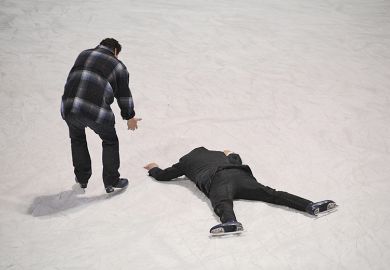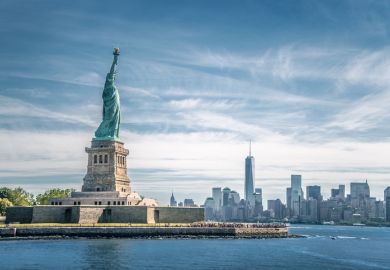The growth in student enrolment in US higher education is forecast to slow substantially over the next decade, but campuses are likely to become more diverse, according to government data.
Enrolment in degree-granting post-secondary institutions is projected to increase by 13 per cent to 22.6 million between 2015 and 2026. This represents a significant slowdown of the 25 per cent growth between 2001 and 2015, even when taking account of the shorter time period.
The data suggest that much of the growth over the next decade will be driven by an increase in the number of non-white students enrolling in colleges and universities.
While the number of white students on campus is predicted to rise by just 1 per cent between 2015 and 2026 (to 11 million), the number of black and Hispanic students is expected to increase by 20 per cent and 26 per cent, respectively, to 3.2 million and 4.1 million.
Meanwhile, the number of Asian and Pacific Islander students is expected to rise by 12 per cent to 1.4 million and the number of students who are of two or more races is forecast to increase by 37 per cent to 904,000.
However, the number of students who are American Indian or Alaska Native will decline by 3 per cent to 143,000, according to the government's predictions.
The forecast is outlined in the report Projections of Education Statistics to 2026, published by the National Center for Education Statistics. The projections are based on predictions of college-age populations, disposable income and unemployment rates but do not take into account the cost or economic value of an education, the impact of distance learning or any potential changes in national, state or local education policies.
The data also suggest that the rate of growth in enrolment at private universities will slow at a much faster rate than public enrolments.
The number of students enrolling in private institutions is projected to increase by 11 per cent to 6 million between 2015 and 2026, a significant slowdown of the 46 per cent increase between 2001 and 2015.
Meanwhile, the number of students enrolling in public universities is expected to increase by 14 per cent to 16.6 million between 2015 and 2026, compared with the 19 per cent rise between 2001 and 2015.
Marybeth Gasman, Judy & Howard Berkowitz professor of education and director of the Penn Center for Minority-Serving Institutions at the University of Pennsylvania, said that the data show that “campuses will become more diverse”.
“It also means that there will be more minority-serving institutions, especially more Hispanic-serving institutions, predominantly black institutions, and Asian American and Native American Pacific Islander-serving institutions. Currently there are more than 650 of them,” she said.
However, she said that “the issue is that most colleges and universities don’t have a diverse faculty” and most academics and universities are not “prepared to educate a diverse nation”.
Register to continue
Why register?
- Registration is free and only takes a moment
- Once registered, you can read 3 articles a month
- Sign up for our newsletter
Subscribe
Or subscribe for unlimited access to:
- Unlimited access to news, views, insights & reviews
- Digital editions
- Digital access to THE’s university and college rankings analysis
Already registered or a current subscriber?








